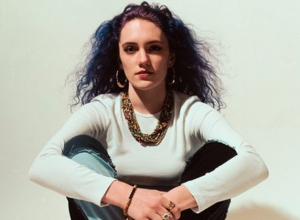
A subversive and comic look at rampant consumerism and the quest for perfection, “The Stepford Wives” exposes what it really means to be human by looking beneath the perfect veneer of an idyllic community nestled in our very imperfect world. Featuring an extraordinary cast, “The Stepford Wives” stars Nicole Kidman, Matthew Broderick, Bette Midler, Christopher Walken, Faith Hill and Glenn Close in a comedic thriller about a community that dares to be perfect and learns that to err is human.
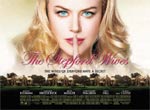
Joanna Eberhart (Nicole Kidman) thinks she’s made it to the top of her world.
The youngest president in the history of the EBS television network, she also has an attentive husband and two beautiful children. On the surface, Joanna’s life appears to be, well, perfect… until one catastrophic day when it all comes crashing down around her. Fired from her job, her perfect marriage in trouble, unable to remember where her kids go to school, Joanna is starting to look like a candidate for electroshock therapy.
Yes, there’s nothing like a nervous breakdown to make Joanna and her husband Walter (Matthew Broderick) reexamine their priorities, pack up the family and make a fresh start in the idyllic suburban paradise of Stepford, Connecticut.
But something strange is happening in the quaint little town of Stepford, and Joanna is suspicious. So is Bobbie Markowitz (Bette Midler), who recently moved to town with her irascible frat-boyish husband Dave (Jon Lovitz). And Roger Bannister (Roger Bart), an architect who came to Stepford hoping to save his rocky relationship with his conservative partner Jerry (David Marshall Grant), is wondering what’s going on, too.
It’s the wives. They’re all like Claire Wellington (Glenn Close) – beautiful, happy and unusually creative with crafts. They can bake a cake, paint the house, mow the lawn, play with the kids and still greet their husbands in lacy lingerie at the end of a busy day.
Disturbed by the stunning but subservient women she meets in Stepford, Joanna grows increasingly uneasy. On the other hand, Walter couldn’t be happier. He’s especially impressed by the Stepford Men’s Association, a fortress-like mansion in the center of town.
“ This town, and the houses, and this place – it’s like a dream,” enthusesWalter. “Like the way life should be.”
Until Joanna Eberhart gets in the way.
Paramount Pictures and DreamWorks Pictures present A Scott Rudin/De Line Pictures Production, A Frank Oz film starring Nicole Kidman, “The Stepford Wives.” Directed by Frank Oz from a screenplay by Paul Rudnick, based upon the book by Ira Levin, the comedy also stars Matthew Broderick, Bette Midler, Christopher Walken, Faith Hill and Glenn Close. Produced by Scott Rudin, Donald De Line, Edgar J. Scherick and Gabriel Grunfeld, the film is executive-produced by Ron Bozman and Keri Lyn Selig. Rob Hahn, ASC, is the director of photography. Ann Roth is the film’s costume designer, Jackson De Govia is the production designer and Jay Rabinowitz, A.C.E., is the editor.
Paramount Pictures is part of the entertainment operations of Viacom Inc., one of the world’s largest entertainment and media companies and a leader in the production, promotion and distribution of entertainment, news, sports and music.
This film has been rated PG-13 for sexual content, thematic material & language.
ABOUT THE PRODUCTION
While there is no real town of Stepford in the state of Connecticut, there are indications that Ira Levin, the novel’s author, was inspired by the small towns of Fairfield County, beautiful suburban communities with enormous homes and manicured lawns. To bring this fictional town to life, director Frank Oz reunited with Rob Hahn, his cinematographer from “The Score” and “In & Out”; production designer Jackson De Govia, who worked with him on “The Score” and “Bowfinger”; and Academy Awardâ-winning costume designer Ann Roth, his collaborator on “In & Out.”
Production designer De Govia understood exactly what the filmmakers were looking for – a wealthy suburb of New York City where people come to relax and to enjoy their gains, whether ill-gotten or not.
“People in Stepford are living at the height of stylish luxury and they make no apologies for their lifestyle,” says De Govia. “No one questions whether they deserve the opulence. They simply have it and intend to take full advantage of it.”
To contrast the idyllic Stepford from the “real world,” director Oz begins the film in New York, concentrating on stark shots of steel, glass and concrete. “It’s a little harsh, and we meant it to be that way,” explains Oz. “That way, when we get to Stepford, everything looks that much more lovely and soft, including the women.”
Scouting dozens of communities in Connecticut as well as New Jersey, the filmmakers looked for homes and neighborhoods that reflected the stylistically idealized town the script called for.
“The look of Stepford is defined by new money,” says Oz. “It’s money made by computer people, electronics people and dot-coms. Their homes are new and gorgeous and there’s no real history or texture to this town.”
Paul Rudnick compares Stepford to a Martha Stewart/Ralph Lauren style of living. “It’s very centered on a kind of sentimental Norman Rockwell vision of the world, a lifestyle that, in reality, you couldn’t achieve without an enormous staff and plenty of servants,” explains Rudnick. “The ideal for the female side of Stepford involves a lot of baking, doilies and difficult-to-iron linen tablecloths. As for the male influence, it’s all mahogany and suede, a kind of post-college frat house feel.”
Renowned costume designer Ann Roth adds that the male side is filled with saturated colors and heavy with pigment, while the female side is enhanced by floral colors. “Martha Stewart’s colors come from nature and spring,” explains Roth. “That’s why you see all these peaches and aquas and greens and yellows in the homes and why you see all these purples and reds and mahoganies on the men’s side. It sort of begs the question: How can a guy like this get a girl like that? And the answer is they made them – all beautiful, all with high perfect bust lines, all with 25-inch-or-less waists and all perky as hell!”
When production commenced at Kaufman Astoria studios, the company began with the interior scenes in Bobbie Markowitz’ (Bette Midler) kitchen, a huge, modern layout combining a kitchen and great room. Set decorator Debra Schutt established the gilded lifestyle with high-end appliances and designer furniture, and florist Christopher Bassett played a pivotal role throughout the shoot, using elaborate and exotic flowers to further illustrate the luxurious Stepford home.
“There’s something about the metaphor of those flowers, perfectly arranged, which is really powerful,” suggests Bassett. “Flowers are a very effective way of bringing the outside world in and transforming a home into a dream house.”
As for the set decoration, Schutt had a fantastic time creating all the homes, but Bobbie Markowitz’ was probably one of the most radical.
“Bobbie’s home is transformed from a rat’s nest of magazines, newspapers, frozen food containers and dirty clothes to a sumptuous and spotless home that you might find in the pages of Architectural Digest,” explains Schutt. “It is something of a metaphor for the Stepford wives who are transformed into architectural perfection, as well.”
As the company moved back to the stages at Kaufman Astoria, the scenes shifted to an old-fashioned square dance held inside a picturesque barn. Choreographer Patricia Birch stepped up to the challenge of teaching the film’s principals and almost one hundred Stepford extras to square dance.
“Glenn Close, as Stepford’s ambassador extraordinaire Claire Wellington, was up on stage calling the dance and everyone was really getting into it,” remembers Birch. “It was quite a spectacle!”
Also at the Kaufman Studios were two complex sets: the Hunt Room, an elegant, wood-paneled room that is home to the infamous Stepford Men’s Association; and an enormous ballroom in a garden setting that is the site of Stepford’s glamorous Midsummer’s Dinner Dance.
Roger Bart describes the Hunt Room by quoting from some of his character’s dialogue, “It’s as if Ralph Lauren meets Sherlock Holmes at a kegger,” laughs Bart. “The place has miles of corduroy and Corinthian leather all whooshed up in a yummy testosterone cocktail.”
As for the magnificent ballroom, production designer Jackson De Govia describes it as “an imaginary wing of a nineteenth century mansion and what happens when you have a lot of money and very, very good taste.”
Enhancing the elegant Midsummer Dinner Dance were literally thousands of flowers, including exotic orchids imported from New Zealand, gigantic hydrangeas and multicolored roses. Classical columns and tables full of crystal made the scene as chic as the champagne that flowed throughout.
“The ballroom set, in particular, is a perfect symbol for the Stepford world,” says De Govia. “It’s also a very good paradigm for the wives themselves. They’re beautiful, they smell good, they taste good and they’re expensive. But they’re plants.”
The ballroom sequences brought choreographer Pat Birch back to the set once again, this time to teach the principals how to waltz and to find fifty Stepford couples who could glide across the floor in ball gowns and tuxes. One of the dolled-up wives was Bobbie Markowitz, portrayed to a “T” by “The Divine Ms. M.”
“I really love the ballroom scene because the first movie I ever saw when I was a child was ‘The Merry Widow,’ starring Lana Turner and Fernando Lamas,” remembers Bette Midler. “It made such an impression on me – the color and the swirling dresses and the music and the beautiful people. So I told Scott Rudin that I hadn’t seen beautiful waltzing in a film for forty years and he suggested I see ‘The Merry Widow’ again. Of course I ran out and got it, and there it was – even the lighting is similar!”
Midler was not alone in enjoying the ballroom scenes. “How many times do you get to see a group of actors of this caliber together in one room?” asks Paul Rudnick. “Chris Walken, Matthew Broderick, Faith Hill, Glenn Close, Nicole Kidman, Bette Midler… I’d go see these people if they were in a car commercial.”
In addition to being an opportunity for Walken to demonstrate his enviable prowess on the dance floor, the Midsummer’s Dinner Dance is also the occasion for the Stepford wives to dress up in all their finery. Glamorous ball gowns, upswept hair, and even tiaras were de rigueur for the town’s biggest party of the year, and therefore, one of the movie’s biggest sequences.
Going all out in her costume design for the event in the film that defines the decadence and the unworldliness of Stepford, Ann Roth dressed Nicole Kidman in a gossamer gown that gives her character Joanna a Barbie doll and Cinderella look rolled into one.
“I wanted Joanna to be ethereal and not quite earthbound,” says Roth. “The ivory color of her dress is meant to blend in with her skin, making her that much more unreal looking.”
For Kidman, the costume designs were pure genius. “We were very lucky to have Ann Roth on this film because she’s very bold in her vision,” says the actress. “She takes her designs right to the edge, and as far as I’m concerned, I’d do every film with her!”
As for the colorful pants and wild tuxedo jackets on the men, Roth says she was inspired by Lily Pulitzer fabrics and madras plaids that you might see at a country club party, and in the end, the best word for the whole scene was simply extravagant. In fact, from the magnificent set decorations to the fanciful costumes to the elegant choreography, the scene embodied the community and ideals of Stepford.
The Stepford homes were key to defining the idyllic community as well, and various locations in Connecticut turned out to be, well, perfect. A super-sized home in Darien that was on the real estate market became the interior for the Herb and Sarah Sunderson (Matt Malloy and Faith Hill) house, while a multi-million dollar home in the exclusive community of New Canaan served as Joanna and Walter’s (Nicole Kidman and Matthew Broderick) new Stepford abode. Later, New Canaan’s beautiful Town Hall, built in 1909, served as the backdrop for the big political rally scene, complete with thousands of balloons and lots of stylish Stepford fanfare.
The Lockwood-Mathews Mansion Museum in Norwalk, Connecticut became the center of all Stepford wives activity. The museum, which had housed the Stepford Men’s Organization in the original 1975 film, was the only former location site revisited by the current production.
Built in the 1860s by financier LeGrand Lockwood, the 62-room mansion is one of the finest Second Empire-style country houses surviving today and was one of the grandest houses in the country during the seventeenth century. It was said to have cost $1,500,000 to build, but sold for a mere $90,000 when Lockwood died three years after moving in. The city of Norwalk bought the home in 1941 and it was designated a National Historic Landmark in 1971.
As part of the arrangement to close the museum and film inside, the production team agreed to do extensive renovation work on the 140-year old building.
“ For several months prior to the actual shoot, our art department workeddiligently to restore and renovate the home’s opulent entry and rotunda,” remembersproduction designer Jackson De Govia. “After carefully researching theoriginal building, artists and craftsmen repaired the wood floors, filled cracks,stained the woodwork on a magnificent stairway and painted the walls with colorsappropriate to the time. They even painted replicas of enormous Hudson RiverSchool paintings, which had once hung in the home, so what you see in the filmis a pretty good take on the original structure.”
De Govia also supervised the design and construction of Joanna and Walter’s lavish house. Built at the Hudson River Stages in Yonkers, New York, the enormous 3500 sq. ft. interior was constructed on the same stage that a month before had been dressed as a full-size supermarket, and later became the site of a top secret laboratory run by the Men’s Association.
When principal photography ended, a new phase of the production began involving visual effects supervisors Scott Souter and Frank Petzold. Together, with their team, they conceived and coordinated the special effects that illustrate the Stepford wives.
Souter, who works for Tippett Studio in Berkeley, California, a company regarded as one of the world’s leading character animation and visual effects houses, met with director Frank Oz and his production team to brainstorm about ways to heighten the film’s comedic elements through imaginative visuals.
“The visual humor and timing had to be very precise,” explains Souter. “There was no room for error. Fortunately, Frank was wonderful about getting us where we want to be. He’s a great judge of what’s funny.”
Faith Hill, who portrays Stepford wife Sarah Sunderson, received a crash course in visual effects technology from the Tippett team.
“During the Stepford square dance, Sarah short-circuits and begins spinning,” explains Souter. “Faith helped us create the effect by working in front of a green screen and it came out perfect.”
In another sequence, Sarah descends the stairs of her home at the same time that Roger Bannister (Roger Bart) picks up a remote control with her name on it.
“He’s taking inventory of Sarah’s functions by pushing various buttons,” says Souter. “To achieve what we were looking for, we extracted Faith Hill against the green screen to add certain robotic effects that correspond to each button press, and once again, her functions and malfunctions were perfect.”
Among the team’s favorite assignments was the creation of Rover, a robotic dog that greets Joanna and Walter when they first arrive in Stepford.
“Rover is a terrier-like dog based on a design by Jackson De Govia that was very graphic, simplistic and elegant all at the same time,” says Souter. “The dog needed to be special because he is very important to the plot in that he becomes Joanna’s ally, alerting her to the fact that plans are in the works for her to become a robot, too.”
Both Souter and Petzold agree that working on “The Stepford Wives” was a challenge, but a lot of fun. “This has been a great project because comedy is so different when it comes to creating special effects,” suggests Souter. “Scary monsters and aliens are one thing, but being funny is a whole other game.”
http://www.stepfordwivesmovie.com
The Stepford Wives – New Trailer LinksTrack /Title Listen/Watch Listen/Watch Download Real Player
Windows Media - 1. The Stepford Wives – New Trailer Links
Starring: The Stepford Wives

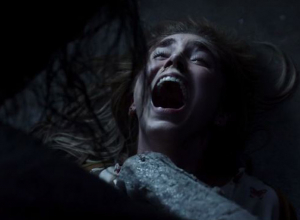
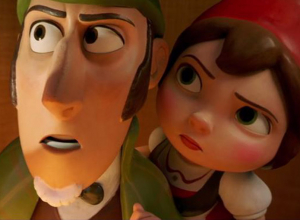

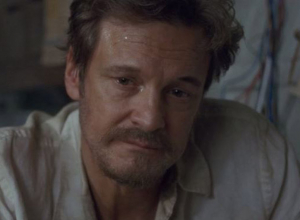

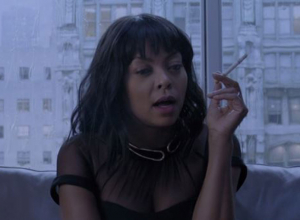
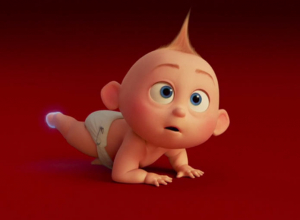
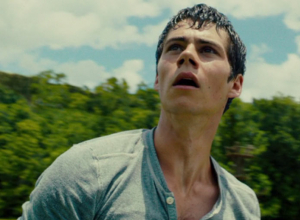
![Rampage [2018] Trailer Rampage [2018] Trailer](https://images.contactmusic.com/images/home/homepage/rampage-1-trlrd-render-920.jpg)
![Game Night [2018] Trailer Game Night [2018] Trailer](https://images.contactmusic.com/images/home/homepage/game-night-1-trlr-render-920.jpg)
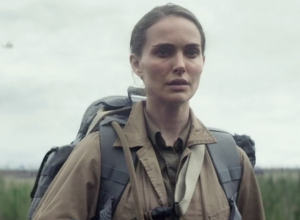
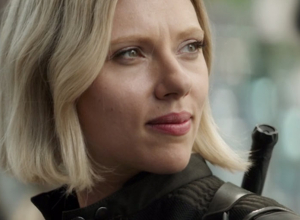
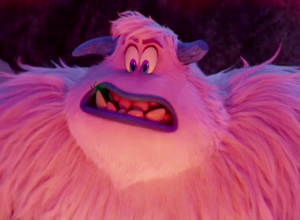
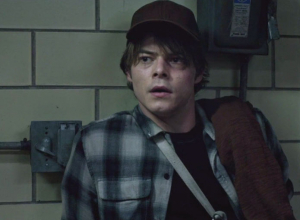

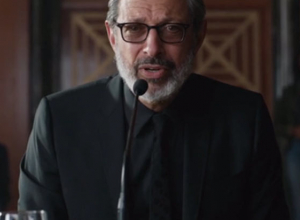
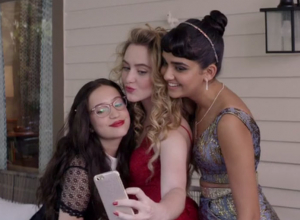
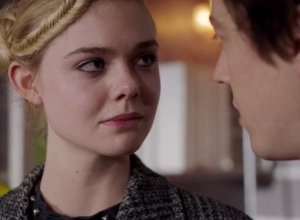
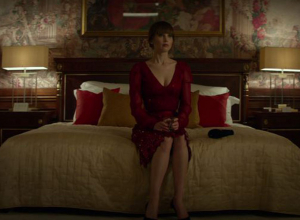
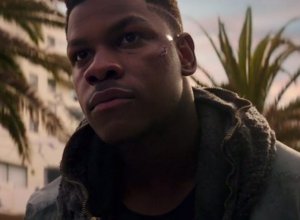

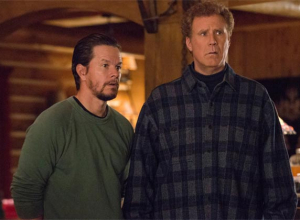
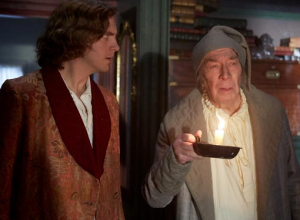
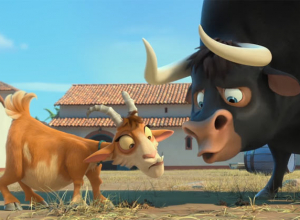
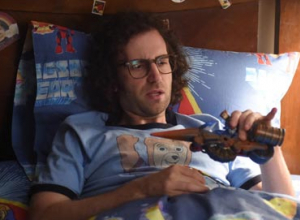
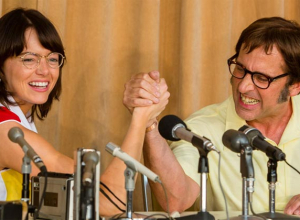
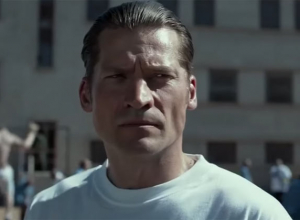


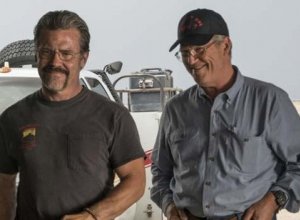

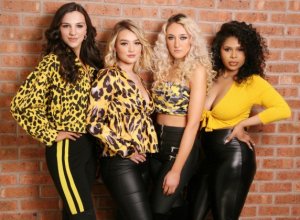


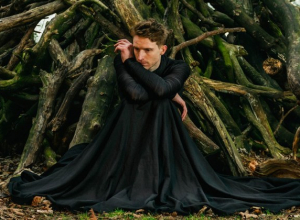

![Luke De-Sciscio talks to us about having the courage to be yourself, forgiving that which is outside of one's control and following whims [EXCLUSIVE] Luke De-Sciscio talks to us about having the courage to be yourself, forgiving that which is outside of one's control and following whims [EXCLUSIVE]](https://images.contactmusic.com/images/home/homepage/luke-de-sciscio-abof-a.jpg)
